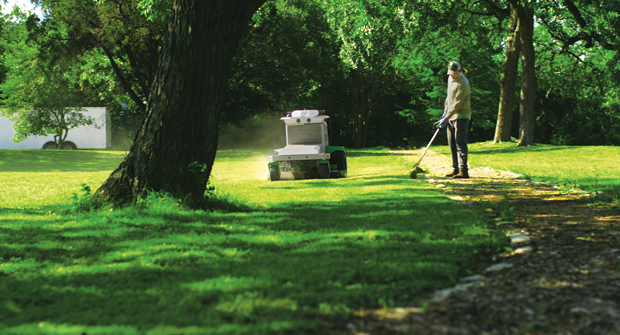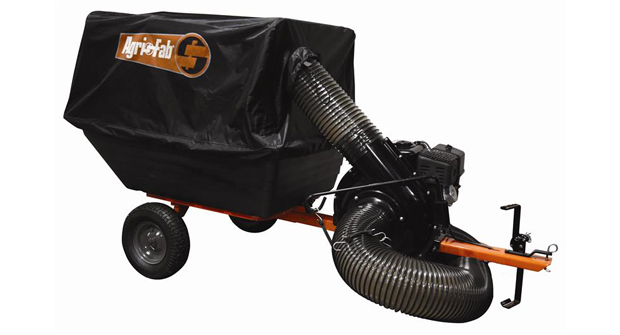
Mowers that mow on their own. Sprayers that can spot-treat weeds without you. Wearables that make crews better at their jobs. This isn’t science fiction. These are examples of artificial intelligence (AI) – enabled technologies that are rapidly advancing and shaping the future of mowing and maintenance.
Landscape operations will become more productive and efficient as more pieces of equipment can sense, respond to and learn from the world around them. As the tech evolves, it will equip crews with operational intel, further improving their performance in the field.
Smart equipment
Robotic mowers are quickly emerging as the leading application of advanced AI in landscape equipment today. AI enables these mowers to navigate around a property like a human operator, identifying and responding to obstacles using cameras and other sensors. For example, a robotic mower will go around a tree or a pole but stop for people and pets. While the machines are mowing, the crew is free to do the higher-value, more complex work on-site.
As AI systems powering robotic mowers become more advanced, landscape equipment will increase crews’ production rates even further. Utilizing cameras and other sensors, mowers will be able to sense turf health, identify weeds and flag pests, serving that information up to the crew to address or account managers to upsell.
Companion robots — imagine small sprayers equipped with the same sensors — will use this data to spot-treat the turf, spraying targeted applications that are more economical and environmentally friendly.
AI will use data from robotic mowers to inform other maintenance services. Looking further into the future, the same visual AI technology that enables the mower to drive itself will advance far enough to allow trucks and trailers to do the same. This could allow landscape companies to create self-operating autonomous mowing fleets closely followed by detail crews who perform the higher margin work that truly makes properties shine.
Smarter crews
Just as advanced AI systems will enable mowers to do more through computer vision, visual AI can improve the productivity and quality of crew members themselves through augmented reality (AR). AR enhances human vision with computer vision, blending the physical world with a digital overlay. Imagine a pair of safety glasses equipped with smaller but similar cameras that project relevant information to operators.
AR glasses could provide new crew members’ on-the-job training, displaying the tasks they need to complete as well as visual instructions for how to do them in the real-world environments where they’re working. Powered by the same visual AI systems as robotic mowers, AR glasses also could identify additional tasks or upsell opportunities while the crew members are working.
AR systems like this are still a few years out, but in the meantime, the information that robotic mowers can provide will still empower crews to operate more productively. Based on mowing performance data, AI programs can recommend better job site workflows and route planning to maximize the efficiency of the crews.
They will also be able to surface client satisfaction data in real-time as well as historical service records so crews can be better equipped to provide the level of service that is expected of them.
These are just a few of the many ways AI will influence maintenance and mowing. As more emerge, they will ultimately empower crews to get more done faster and to a higher level of quality. What was once a far-out future is quickly becoming a day-to-day reality in the landscape industry.


